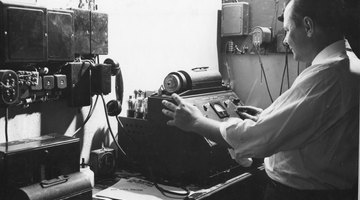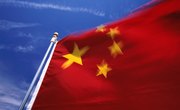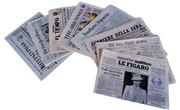In the middle of the last century, a spark of innovative ideas came to life in households around the country. These 1940s inventions would be the forefront of technological advancements that would continue to evolve over the next 50 years and into the wireless age. From what was invented in 1949 to what was invented directly after the culmination of World War II, there are a wealth of technological advances that can be attributed to this heady heyday of American culture.
The 1940s Technology
The era was a time of great technological advancement that came from the tumultuous years of World War II. Americans had great pride in their work and country. The 1940s values and culture created a good work ethic and sense of positive national egocentrism. Worldwide governments responded to the advanced warfare with inventions of their own to combat invading armies. Once the cacophony of war and treaties receded, the ending result was a plethora of technologies that would change the modern world. They funneled money into research and development of infantile technology for commercial use. The funding was intended to enhance the military use of the then-current technology while making money from commercial products that spiraled off of the initial invention. These ranged from radio waves to radar technology.
Microwave Technology in Use
The microwave was a big invention for warm, hand-held snacks. Radar technology was in heavy use during World War II. It was rapidly changing to keep up with the weapons of the enemy and to give an edge to troops battling on the front lines. After the war, a Raytheon Corporation engineer, Dr. Percy Spencer, realized that a magnetron vacuum tube used in radar technology had the added benefit of becoming entirely too hot during use. It could pop kernels of corn, explode raw eggs and melt mounds of sugary candy into unrecognizable heaps of goo. All that energy flying around was a waste, so Dr. Spencer created a box that could condense the highly charged microwave energy to quickly and evenly cook small amounts of everyday food. The first commercial microwave was available on the market within a year. In 1947, Raytheon revealed a 750-pound, 5 ½-foot tall microwave for the chef who could also afford the $5,000 price tag.
Computers Take Center Stage
The first computer made its debut on the world stage in 1942 at Iowa State University. It was intended to solve linear equations. The machine was powered by 18,000 vacuum tubes and was set to work to solve the Army’s computing artillery and bombing tables. This worked so well that the federal government funded programs to create computers that could work on more and more complex military problems. Eventually, the technology found its way to the commercial market, and personal computers branched off from this most-important event that happened due to 1940s technology. Most of the modern world shares culturally relevant information through technology on a daily if not hourly basis.
Surprise in a Can
For what was Play-Doh originally made? In the 1930s, a soap maker came across a formula that made a malleable mix of fun and child-friendly dough. The soap company, Kutol Products based in Cincinnati, Ohio, found that it could remove bits of paper from a wall. While it didn’t do this very well, it did go on to become one of the most popular children’s toys over the last 60 decades.
Television Makes Its Debut
At the beginning of the decade, an inventor showcased the first color television receiver. It was called the monochromatic picture tube TV. It had a rotating disc that was fitted with transparent color filters and had 600 lines of resolution, a brilliant technological design of that time. The telechrome tube was fully developed by 1944 and projected color onto a thick, fluorescent screen that was embedded with phosphors that glowed in three main colors. While it has been blamed for obesity and for dumbing down generations of viewers, TV has affected culture in positive ways as well. It creates a sense of shared socialization when popular shows create catchphrases such as "To the moon, Alice" from "The Honeymooners" and "Yada, yada, yada" from "Seinfeld."
Nuclear Age and Repercussions
In September 1942, the Manhattan Project started the nuclear age. From that first testing in the southwest desert of the United States, nuclear technology blossomed in countries around the world. Although the technology continues to be used for weapons, it is also used as a heat source for spacecraft, food irradiation and medicine. Nuclear energy supplies 20 percent of the energy used in America.
Related Articles
References
- Energy.gov: Manhattan Project Background Information and Preservation Work
- Heinz Nixdorf Museum: The Invention of the Computer
- Wonderopolis: Who Invented Play Dough?
- The People History: What Happened in 1949: Important News and Events, Key Technology and Popular Culture
- How Stuff Works: 10 Ways TV Has Changed American Culture
Writer Bio
Kimberley McGee is an award-winning journalist with 20+ years of experience writing about education, jobs, business trends and more for The New York Times, Las Vegas Review-Journal, Today’s Parent and other publications. She graduated with a B.A. in Journalism from UNLV. Her full bio and clips can be seen at www.vegaswriter.com.











